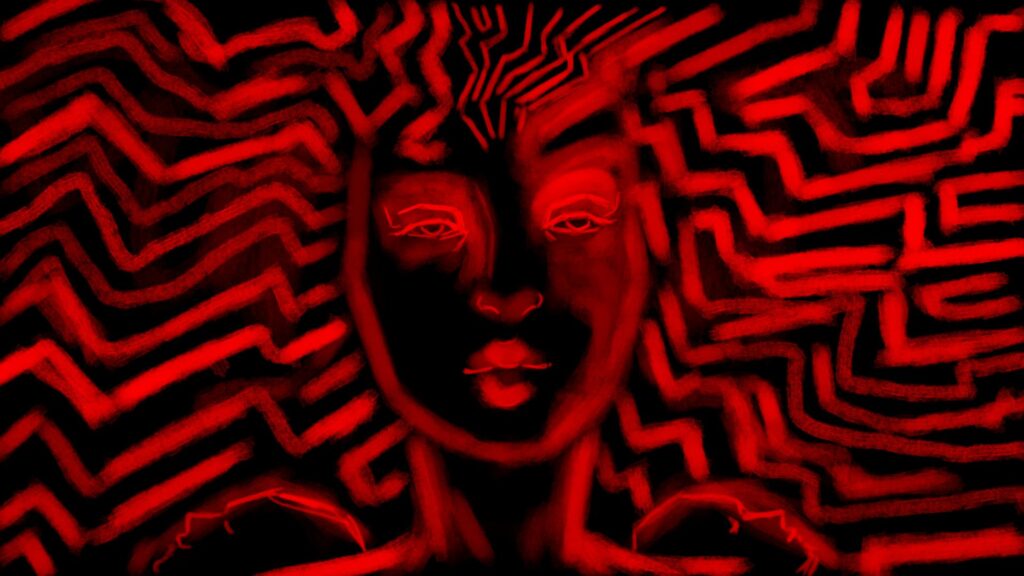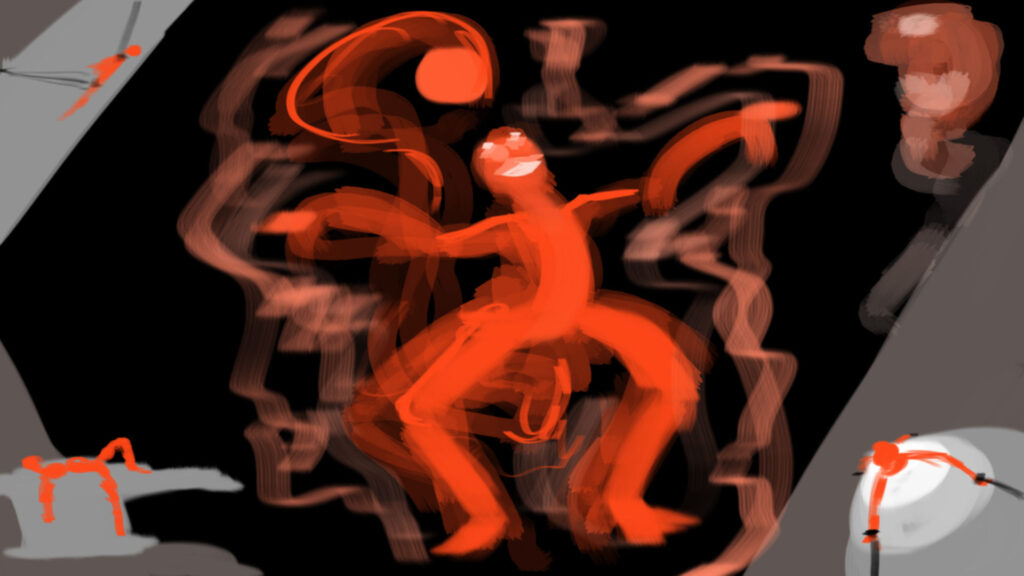
- Pain is a Tool.
- It allows you to manage Emotional involvement.
- To make Relationships evolve.
- And to create new Stakes.
Summary – How to use Pain to display Consequences?
- Establish a Pain Scale.
- Make use of this Scale to create a Progression.
- Use different types of Inflictions to Characterize Situations.
- Display the diversity of Consequences through Pain.
- Place new Trials in front of your Characters.
- Continue to manage the Story’s Rhythm through Pain.
- Always ask yourself…
- Do you need More Pain?
- If Pain is inflicted Constantly & Evenly it becomes Numb.
- You need Variations.
The Pain Scale
- Individual Scale
- On an Individual Scale, pain could increase like this:
- Hits & Blunt trauma
- Wounds & Slashes
- Amputation
- Bodily Invasion
- Bodily Desecration
- Reification
- Death
- Group Scale
- On an Group Scale, pain could increase like this:
- All the above inflated to another
- Death of another
- Inner Dissension
- Voluntary Separation
- Involuntary Separation
- Group/Organization Extinction
- Species Extinction
- As a group Characters Share the Pain.
- Destroy others is destroying oneself.
- Empathy should be displayed in Crisis.
- Brutality & Fear
- Violence affects the Characters Behavior.
- It creates Panic.
- Immediate Change create intense Panic in the present.
- And Hesitation in the Future.
- Brutality amplifies the impact of Fear.
- In some cases, you’ll want your Characters to barely survive.
- It sustains the Surprise.
- Leaving the Characters not knowing what to expect.
- It Develops the Characters caution.
- Violence force characters to look for Alternatives.
- Violence & Brutality are narrative tools.
- They are only to be used Proportionately.
- You’re not here to be vindictive.
- You’re here to deliver an Experience.
- Creating Fear through Escalation
- Place your Characters in a Room.
- Seal the Room.
- Let a Liquid Fill in.
- It may be water.
- It may be another liquid, like Chloridic Acid.
- Let a creature get in the water.
- Which creature is it?
- Are there multiple ones?
If you want to know more about writing Painful Scenes.
Madness
- Origins
- The Madness of a Characters is often rooted in an intense pain.
- It could accumulate gradually as Frustration gains the Characters.
- But the Brutal option is easier to implement.
- The Brutality must be clear.
- If you use the aforementioned Scale, the damage intensity necessary oscillates from 4 to 6:
- Bodily Invasion
- Bodily Desecration
- Reification
- Insanity & Perception
- The Madness itself can be the result of Illnesses.
- Or be amplified by a pre-existing Illness.
- Whichever way, the Pathologic Condition should be clear.
- And distinct from the Sane Condition.
- Even if it is only on the Macroscopic level.
- The Character’s Behavior must Change.
- She may be afraid for her own safety.
- And develop a form of Paranoia.
- How is it depicted?
- There may be some place for Comedic display of madness.
- Though be careful if you try to create Relatability.
- Most situations will end in the Horror & Drama sphere.
- Consequences
- The Character may be inclined to inflict pain onto others.
- This includes: Invasion, Torture & Reification.
- The Character may be lost after insanity reaches her.
- Or it could be a Reversible State.
- Death is an option.
- But, like your Characters, try to look for Alternatives beforehand.
If you want to know more about displaying Change in Relationships.
Illness
- Origin
- Illnesses have diverse Origins: Infection, Poison, Toxin, Deficiencies, Hormonal Imbalances…
- So, diversify.
- In most cases you’ll need to Introduce a Damaging/Pathological element in the Character.
- Or Remove something Essential from her.
- Effects
- Pain generates Irritability.
- If anything else, the Character should be Angrier.
- Use simple Mood shifts: from Anger to Fear to Sadness.
- Depict the Frailty of the Character.
- Display the Bodily Weaknesses.
- As well as the Mental Weaknesses.
- Make use of Time/Space dephasing.
- Create Confusion.
- Illnesses & Malady should leave your Character at Lost.
- Perception
- Illnesses can be perceived as Curses.
- Or Blessings.
- And therefore create Ostracism.
- Choose a Symbol inked to the type of Infirmity.
- Exterior elements should see the Character as Contagious.
- Or Undesirable, and begin to Reject her.
- Another way is Pity.
- The Character may be seen as fragile and in need of Projection.
- Or she can be seen as incapable entity.
- A last way is Empathy.
- Empathy is not Sympathy.
- Feelings of Sympathy can develop for the Character.
- And should only if the Character has enough likelihood to be considered sympathetic.
- Affinities are essential in this last case.
- Consequences
- Due to the Illness the Characters may not be able to continue the Story.
- She may Need to rest.
- Definitively.
- Healing her is a way.
- And the recovery may be either Full or Partial.
If you want an Example of how to create an Illness.
Death
- When to Kill a Character?
- The Death of a Character leads to Grief & Loss.
- Whichever the Character is.
- The structure of your World will be altered by Death.
- Death invokes feelings of Injustice & Fairness.
- The Death of a Character should be prepared.
- Characters can be Forgotten.
- You can design a Location to let their memory perennate.
- How to Kill a Character?
- Main Characters deaths must appear as a Necessity.
- They should die in a Specific manner.
- In a moment Specific to their Story’s advancement.
- Or conclusion.
- The Location should be picked to focus on the Character’s death.
- The Issue & the Stakes should leave little to no other options.
- Leading to the awaited Resolution.
- Of course, you can reverse the situation and create a Brutal death.
- Violent death have their own use.
- Unfair deaths will generate frustration and it may be your objective.
- The irreversible character of Death can be amplified by Numbers.
- ex.: Killing the last members of a Species.
- Why Kill a Character?
- Death can be used as a mean of Conclusion.
- A Story can end with the Death of a Character.
- Or through the Death of a Character.
- Death may be a way to achieve their Goal.
- In some cases Death is the Goal itself.
If you want to know more about Characters Death.
